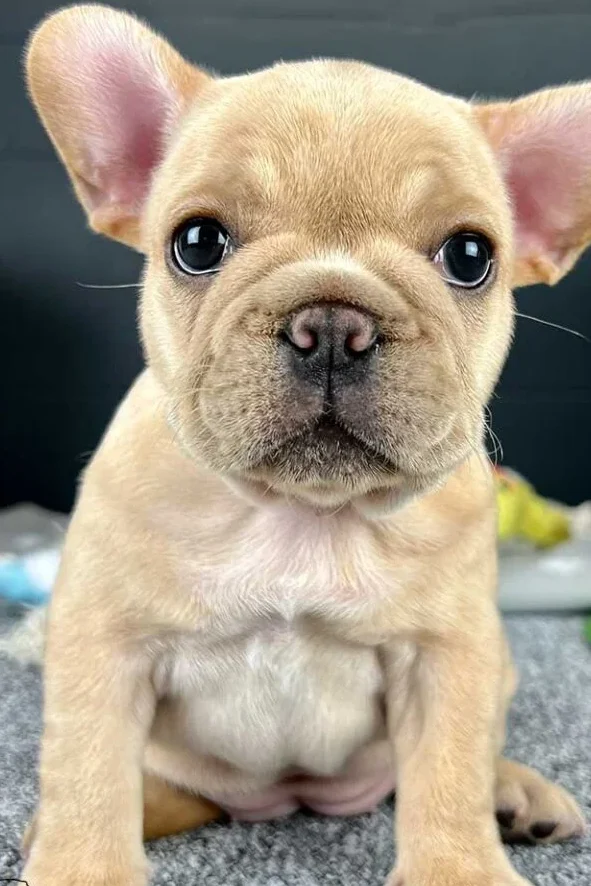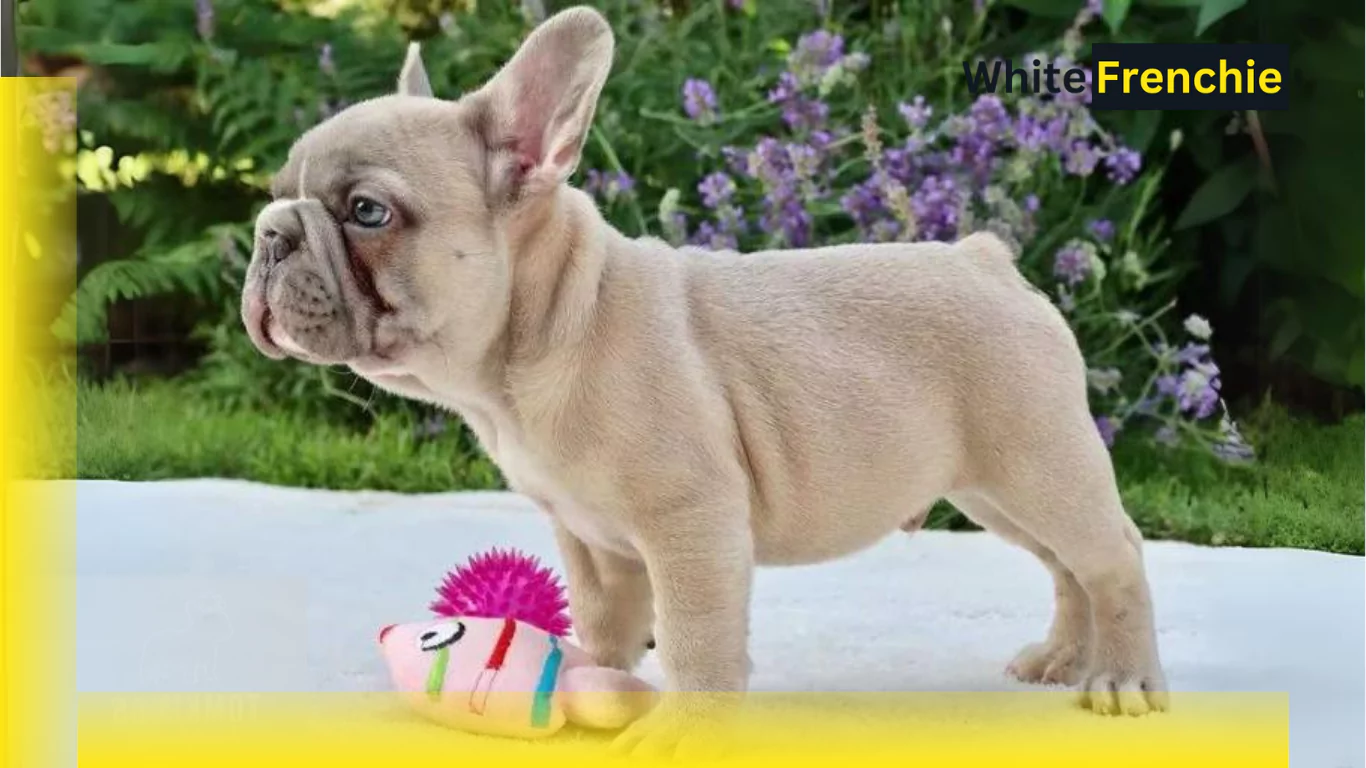The Big Rope French Bulldog is known for its unique look, especially the thick wrinkle, or “rope,” across its nose. This special trait makes them stand out from other Frenchies.
These facial folds aren’t just for show they’re a desirable trait among breeders who work hard to reduce common health issues like skin infections and genetic defects in French Bulldogs.
If you’re thinking of getting one, you’ll need to give them proper care, like cleaning their folds with a damp cloth to avoid skin problems. Besides their looks, Big Rope Frenchies have a friendly personality and make great companions.
Responsible ownership means giving them a balanced diet and regular exercise for good health. Reputable breeders also focus on health screenings to ensure they stay healthy and provide health guarantees for peace of mind.
What is Big Rope French Bulldog?
A Big Rope French Bulldog is a variation of the traditional French Bulldog, distinguished by the prominent “rope” or thick wrinkle across the top of its nose. This trait is the result of selective breeding and is uncommon, making them more rare and sought after.
The wrinkle adds to their unique appearance but also requires regular care to avoid skin infections. Beyond their distinctive looks, Big Rope French Bulldogs have the same friendly and affectionate temperament as regular French Bulldogs. These dogs make great companions but need proactive care for their skin folds and overall health.
Genetics of the Big Rope French Bulldog
Genetic Inheritance
The Big Rope trait is a hereditary feature passed through specific breeding lines. It can vary in prominence among individuals, depending on the genetic background of the breeding pairs.
Genetic Factors
- Brachycephalic Genes: These genes contribute to the French Bulldog’s flat face and short snout, which are crucial for developing the nose rope.
- Skin Elasticity Genes: These genes determine the skin’s elasticity and thickness, essential for the extra skin that forms the nose rope.
- Modifier Genes: These genes influence how pronounced the nose rope becomes by interacting with the primary brachycephalic and skin elasticity genes.
Selection and Breeding
Ethical breeding involves selecting pairs to enhance the Big Rope trait while maintaining the overall health of the breed. Responsible breeders focus on both the appearance and well-being of the dogs to ensure a healthy outcome.
Health Considerations
1. Respiratory Issues: The short snout can lead to breathing problems, particularly in hot weather or during physical activity.
2. Skin Infections: The folds of skin around the nose need regular cleaning to avoid infections.
3. Eye Problems: Brachycephalic breeds, including Big Rope French Bulldogs, are more prone to eye issues.
Understanding these genetic factors helps breeders and potential owners make informed choices about the Big Rope French Bulldog.
Facts About Big Rope French Bulldogs

1. Unique Appearance
The pronounced nose rope gives Big Rope a distinctive and adorable look that sets them apart from other breeds.
2. Fluffy Traits
A small percentage of Big Rope French Bulldogs have fluffy coats, characterized by longer, softer fur. These fluffy Big Rope Frenchies are less common and can be more expensive due to their rarity. This additional coat trait adds to their appeal and uniqueness.
3. Color Variations
Big Rope French Bulldogs come in a variety of coat colors and patterns. From brindle to merle, these variations enhance their distinctive appearance and make them even more attractive.
4. Growing Popularity
Big Rope Frenchies are becoming more popular around the world. Their distinctive look and charming nature attract many dog lovers.
5. Charming Personality
These dogs are known for their friendly and affectionate nature. They love to be around people, making them great pets for families and individuals. Their playful and loving personality adds to their appeal.
6. Dogs Show
Full Grown Big Rope French Bulldogs striking appearance makes them stand out in dog shows.
Health Issues in Big Rope French Bulldogs
Big Rope Frenchies are known for their striking appearance and affectionate nature, but they can be prone to certain health issues common in the breed. Here’s what you need to know to keep your Big Rope Frenchie healthy and happy.
1. Brachycephalic Syndrome
Big Rope French Bulldogs, like all brachycephalic breeds, have a flat face that can cause respiratory problems. This can lead to symptoms such as snorting, snoring, and difficulty breathing, especially in hot weather or during exercise. To manage this:
- Avoid Hard activities in hot conditions.
- Provide plenty of shade and water.
- Monitor their breathing during physical activities.
2. Skin Fold Dermatitis
The prominent wrinkles and skin folds on a Big Rope Frenchie’s face can trap moisture and debris, leading to skin infections.
- Regularly clean and dry the facial folds with a damp cloth.
- Watch for signs of irritation like redness or odor and consult a vet if needed.
3. Eye Issues
Due to their prominent eyes, Big Rope French Bulldogs are at risk for eye problems such as cherry eye, dry eye, or corneal ulcers.
- Schedule regular eye exams.
- Keep the eye area clean to prevent infections and other issues.
4. Ear Infections
The large, floppy ears of Big Rope French Bulldogs can easily trap moisture, leading to ear infections. To prevent these:
- Inspect and clean their ears regularly.
- Ensure their ears are dry after baths or swimming.
5. Joint Problems
Joint issues like hip dysplasia or patellar luxation can affect French Bulldogs.
- Maintain a healthy weight.
- Provide moderate exercise without excessive jumping.
- Schedule regular veterinary check-ups.
6. Diet and Exercise
A balanced diet and proper exercise are crucial. To keep your Frenchie healthy.
- Feed a diet suited for French Bulldogs to avoid obesity.
- Ensure exercise is appropriate for their breathing abilities.
7. Regular Veterinary Check-ups
Frequent visits to the vet are important for.
- Early detection of health issues.
- Keeping up with vaccinations and preventive care.
Adult Big Rope French Bulldogs are wonderful companions, but they do require attentive care to manage potential health issues. By staying proactive with their health, grooming, and diet, you can help ensure your Big Rope French Bulldog enjoys a long, happy life.
Differences Between Big Rope and Fluffy French Bulldogs
| Feature | Big Rope | Fluffy French Bulldog |
|---|---|---|
| Appearance | Unique nose rope with skin folds. | Soft, cloud-like, longer coat. |
| Coat | Short and smooth. | Long and fluffy. |
| Coat Colors | Standard colors like fawn and brindle. | Various colors, including rare hues like blue. |
| Size | 16-28 pounds, 11-12 inches tall. | 16-28 pounds, 11-12 inches tall. |
| Personality | Affectionate, playful, enjoys being a lap dog. | Playful, loyal, loves cuddling and adventures. |
| Care Needs | Clean nose folds, moderate exercise, balanced diet. | Regular grooming, moderate exercise, balanced diet. |
Big Rope French Bulldog Prices
Big Rope French Bulldogs are a rare and unique breed, often leading to higher prices. Here’s what affects their cost.
- Coat Color: Rare colors like blue and merle are more expensive than common colors like fawn and brindle.
- Gender: Female puppies typically cost more due to their higher breeding value.
- Age: Younger puppies usually have a higher price than older ones.
Beyond the purchase price of a Big Rope French Bulldog, factor in ongoing costs like regular vet care, vaccinations, grooming, and, if breeding, additional expenses for health screenings. Understanding these costs is crucial for proper financial planning.
FAQs
Big Rope French Bulldogs are rare due to their unique nose wrinkles that resemble ropes, a feature not commonly seen in the breed. This distinct trait, along with the specific genetics required to produce it, makes them highly sought after and exclusive.
Yes, Big Rope French Bulldogs are known for their friendly and affectionate nature. They generally get along well with children and other pets, making them great family companions.
Big Rope French Bulldogs generally have a lifespan of 10 to 12 years. With proper care such as a balanced diet, regular exercise, and routine vet visits they can live longer, providing many years of companionship.
